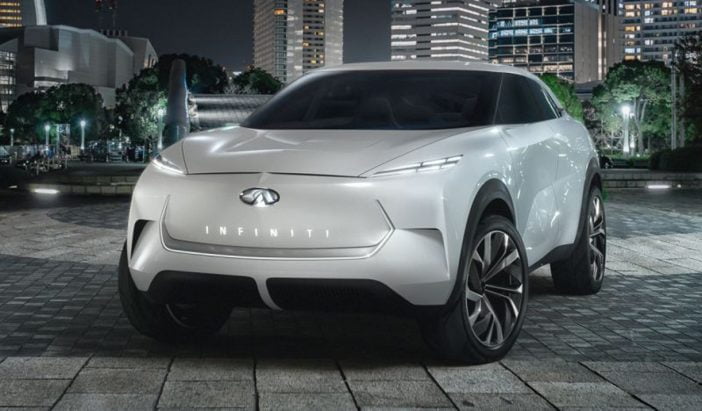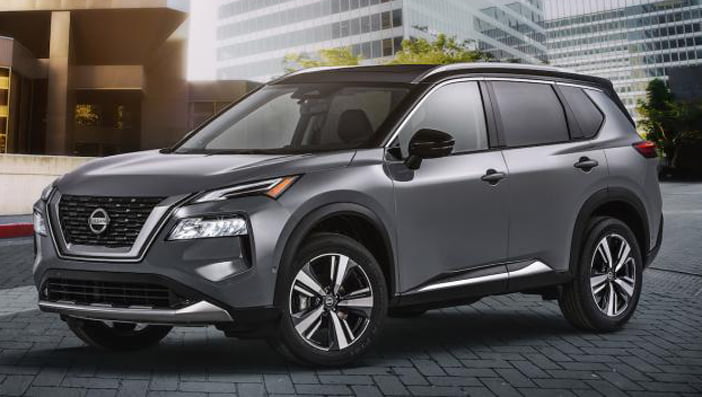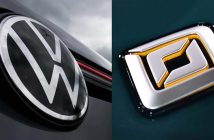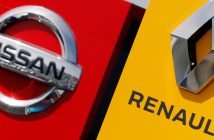+++ The number of publicly accessible CHARGING POINTS for electric vehicles jumped 60 % in 2019; the biggest increase in 3 years and outpacing sales of battery-powered cars, according to the International Energy Agency (IEA). In its annual Global EV Outlook, the IEA said the number of public slow and fast charging spots reached 862.118 globally, with China (the world’s largest car market) taking a 60 % share. Fast chargers accounted for 31 % of the total. The IEA defines slow charging as providing power of up to 22 kW, taking hours to charge a vehicle battery. Fast chargers, including Tesla’s superchargers, can take minutes. “China continues to lead in the rollout of publicly accessible chargers, particularly fast chargers, which are suited to its dense urban areas with less opportunity for private charging at home”, the report said. The increase reflects efforts to build critical infrastructure ahead of an expected boom in EV sales, which accounted for just 1 % of global car stock last year, according to the IEA. While most EV charging takes place at home or at work, the rollout of public infrastructure is key to convincing prospective buyers that there is no risk of them getting stranded on an empty battery. As part of its economic stimulus plan, Germany announced earlier this month that it would provide €500 million to support the rollout of private charge points, of which there are 6.5 million worldwide. “I view this as an organic step in the right direction, but not a revolution with big winners or losers”, said Thomas Daiber, founder of e-mobility advisory firm Cosmic Cat, of the German plan. As well as Tesla, charge point providers include Anglo-Dutch group Shell, France’s Engie, Germany’s E.ON, Volkswagen and ChargePoint, whose shareholders include Daimler, BMW and Siemens. +++
+++ It’s hard enough sustaining a car brand in EUROPE right now, let alone launching a new one, but that doesn’t mean there’s a shortage of wannabes queuing up to take a slice of the action in what is regarded as the toughest of all markets. Dates and intentions can move of course, but Byton, Genesis, Lynk&Co and Nio are among the list of brands hoping to make the leap from unknowns to market players in the coming months and years, with 3 of those 4 (Hyundai-backed Genesis being the exception) seizing upon technological change (led by but not restricted to EV powertrain developments) in a bid to seize the moment. It’s telling that at moments like these, we tend to focus on the negatives, almost as though we fear change no matter how much we question the quality of the status quo. Car buying is a generally conservative business, as well it might be given the sums involved, with even most extroverts wishing to express themselves with an eye-catching paint scheme rather than buying a car bearing a badge that they have to justify all the time. So it is Infiniti’s glorious failure springs to mind, its sticker probably completing more laps in Formula 1 than it sold cars in The Netherlands, as a particularly high-spending example of what can go wrong when you try to take on Audi, BMW, Mercedes et al. Other examples include Chevrolet, Daihatsu and even once-ambitious Brilliance, whose struggles seemed to halt the much-vaunted arrival of more Chinese car makers a decade or so ago. But what of those that have succeeded? You rarely hear of them getting credit for it, but only a fool would question the effectiveness with which Dacia has cemented itself into a Europe-wide position of mass-market acceptance, Tesla has become the mark for EV leadership, valued well beyond the scale of its sales, and Alpine has slotted in to become such a byword for sports car purity. Why did they succeed where others failed? All 3 came with the advantage of a clear proposition (and little to no direct opposition) and quality cars to sell. Dacia wasn’t launched as a rival to anyone, other than perhaps an upscale used car buyer or some lower fringes of the Nissan range; Tesla established itself when electric cars were unfashionable; and Alpine has so perfectly nailed its brief to deliver agility-based smiles over power-laden ones that it has set itself apart even from the might of Porsche. Can others do likewise? Of course they can, but as the market gets crowded, it is only going to get tougher. +++
+++ HUNGARY is ready to give financial support to Audi to help its manufacturing plant in the country run at full operating capacity, prime minister Viktor Orban was reported as saying as he visited the site. Orban said Audi was key to the Hungarian economy’s recovery from the adverse impacts of the coronavirus pandemic. “We have to fight for the Audi plant as well”, Orban said. MTI said Audi’s engine and car manufacturing plant in the western Hungarian city of Gyor returned to normal operation with 3 shifts after weeks of disruption caused by the pandemic. “We can protect jobs with agreements”, Orban said. The prime minister did not elaborate on the specifics of support for Audi, which employed 12.807 people at the end of 2019 and is one of Hungary’s top exporters and revenue earners. The Gyor plant manufactured 1.97 million engines and 164.817 cars last year, including the Q3 Sportback, the RS Q3 and RS Q3 Sportback, after investments worth over €11.5 billion since Audi entered Hungary. Orban said it could take up to 2 years for major manufacturers in Hungary to draw up plans exceeding those from before the pandemic, signalling a potentially long recovery for the local car sector, a mainstay of the Hungarian economy. Audi Hungaria’s chairman of the board, Alfons Dintner, said that the factory was still well off pre-crisis output levels, adding that customer demand was “moderate”. +++
+++ HYUNDAI and affiliate Kia have seen their combined sales of eco-friendly cars exceed the 1.5 million milestone globally. The carmakers said that as of May, they had sold 1.54 million hybrid, electric, hydrogen fuel cell and plug-in hybrid cars since they started the sale of green cars in 2009. Only a third of them, or about 504.400 units, were sold in the domestic market. Despite the economic slowdown caused by the coronavirus epidemic, their green car sales in the first 5 months of the year rose 12 % on-year to 160.000 units, in contrast to a 25.6 % plunge in overall sales. The Niro hybrid was the most popular model with 359.460 units sold, followed by the Sonata hybrid (246.217 units) and Ioniq hybrid (192.926 units). The carmakers are also expanding their presence in the global green car market. According to automotive market researcher MarkLines, Hyundai and Kia accounted for a combined 9.1 % of the market from January to April this year; up 2.2 percentage points from the same period of last year. +++
+++ Car sales in INDONESIA plunged 95.8 % in May from a year earlier to 3.551 units, industry association data cited by the country’s largest auto distributor PT Astra International showed. May sales were also less than half the 7.868 units sold in April when sales were down 90.6 % from a year earlier due to movement curbs imposed to contain the spread of the coronavirus. Indonesia’s car market is dominated by Japanese brands, with Toyota and Daihatsu usually leading sales, but Mitsubishi and Suzuki led in May. +++
+++ INFINITI raised more than a few eyebrows when it announced plans to follow a strategy it described as Nissan-Plus. Although this term suggests the brand’s image will be dangerously watered down, its chief executive stressed its flag will remain firmly planted in the luxury car segment as he outlined what to expect in the coming years. The executive team led by Infiniti boss Peyman Kargar will reboot the company with a focus on profitability. “Premium brands should bring more money to the company, so that’s the objective. We are not at the level we want to be,” he told. Several new products are on their way, including a crossover with a fastback-like roofline named QX55, and Kargar clarified many future models will ride on an architecture shared with parent company Nissan. It will be compatible with gasoline-powered, hybrid and electric drivetrains. He explained sharing platforms and components is necessary to save money because the company, like its peers and rivals, is spending a small fortune on developing electrified, autonomous, and connected technology. The shift will likely spell the end of the driver-friendly rear-wheeldrive platform found under the Q50 and the Q60, but don’t expect Infiniti to put its emblem on, say, a Sentra, and call it a day. It will remain a luxury brand. “The objective is to use these assets of the company and then to reinject the money we are saving into the luxury experience and ingredients of Infiniti. We will put more money into Infiniti’s future, but this money will come from the savings in globalized platforms”, Kargar explained. The strategy he’s outlining is one many of the firm’s competitors have already adopted. Lexus, Acura, and Audi all build cars using parts sourced from their respective parent company. Lamborghini’s Urus is related to the Volkswagen Touareg under the sheetmetal. Kargar noted every upcoming new model will be defined by an overhauled design language. I don’t know if recent concept cars (like the QX Inspiration introduced in Detroit in 2019; see photo) will influence its upcoming vehicles. However, its future cars will offer nicer interiors, more user-friendly infotainment systems, and they’ll receive tech features before Nissan’s variants get them, which, oddly, hasn’t always been the case in recent years. Infiniti’s turn-around will start in 2020, when the aforementioned QX55 makes its debut after a brief delay. The next-generation QX60 will arrive in 2021, likely as a 2022 model, and it will be built on the same bones as Nissan’s next Pathfinder. Hybrid models equipped with an evolution of Nissan’s gasoline-electric e-Power technology will arrive in 2023, and at least one electric model is under development. “I saw the products: 4 years of coming products. They are absolutely great; the technology we are going to put in them is absolutely great. And, it’s really a luxury experience. We’re not going to downsize the brand”, Kargar concluded. It sounds like better days are around the corner for those patient enough to wait for them. +++

+++ JAGUAR LAND ROVER (JLR) has posted a €460 million loss for its financial year ending 31 March, with last year’s return to profit offset by the massive slump in demand during the coronavirus pandemic. The impact of the crisis and associated shutdowns led to JLR retail sales falling nearly 31% year-on-year between January and March; down to 109.869 units. It meant full financial year sales were down 12.1 % over the 2018-19 period. The fall in demand made revenue fall dramatically, offsetting positive figures in the second half of 2019 that returned the company to profitability under its Project Charge transformation programme. JLR has now increased its cost-cutting plans and will make 1.100 agency staff redundant. With Covid-19 making a substantial impact in the Chinese market from January and continuing to restrict sales in Europe, it made a pre-tax loss of €570 million in the first quarter of 2020. That offset early profits to result in a €460 million full-year loss on revenue of €26 billion. JLR chief executive Sir Ralf Speth said: “Jaguar Land Rover’s early action to transform its business meant that, as a company, we were on track to meet our full-year expectations and operational and financial targets before the pandemic hit in the 4th quarter. We also reacted quickly to the disruption caused by Covid-19. Our immediate priority has been the health and wellbeing of our people, and this remains the case as we have now begun the gradual, safe restart of our operations”. JLR lists strong positives despite the gloom outlook, having just missed out on breaking even on its earnings before interest and taxes. It also boasts “solid liquidity” of €6.3 billion, including €4.2 billion cash and a €2.1 billion undrawn revolving credit facility. Product successes include the Range Rover Evoque, of which sales rose by 24.7 % year-on-year, and the Jaguar I-Pace, of which sales increased by 40 %. The revised Land Rover Discovery Sport was launched in China in March and may prove popular there. Chinese sales of the Range Rover and Range Rover Sport are described as “particularly encouraging”. Globally, demand for JLR products was down 62.5 % year-on-year in April and 43.3 % in May. However, a recovery is expected, because 89 % of JLR’s global retailers are now fully or partially open, while plants in Solihull, Halewood, Slovakia and Austria have restarted production. Castle Bromwich, which produces Jaguar saloons and the F-Type sports car, won’t resume until mid-August, however, with the factory being fitted out to produce the all-new, electric-only Jaguar XJ. JLR’s Project Charge cost-reduction plan is still making headway, with saving increasing by €700 million in the first quarter of 2020 to €4 billion. It will reduce investment spending and has been “deferring or delaying lower-margin and non-critical investment”, intending to increase cost savings by a further €1 billion over the €4 billion previously announced as part of Project Charge. It admits it has to reduce the number of contract-agency employees in its factories “over the coming months” by around 1.100. +++
+++ LAMBORGHINI has announced that it will no longer attend high-profile motor shows, choosing instead to focus on smaller, bespoke events aimed directly at customers. The move was confirmed by chief marketing and communications officer Katia Bassi, who told: “We decided to abandon the motor shows because we increasingly believe that to have an intimate relationship with the customer is key and motor shows are no longer aligned with our philosophy”. It means the company’s new Sián FKP 37 hypercar will likely be the last Lamborghini to be unwrapped at a public motor show. The striking 820 hp hybrid made its debut at the Frankfurt motor show in September 2019, following the launch of the new Huracán Evo Spyder in Paris and the Aventador SVJ Roadster in Geneva several months previously. Bassi told that Lamborghini will continue to run a “constant program of exclusive customer events”, including “unveils of exclusive new cars in special locations, exclusive tours and driving programmes for both customers and prospects, and lifestyle events where we can invite our clients, prospects and VIPs to join other like-minded people in appreciating many different aspects of the Lamborghini brand”. She added: “Lamborghini always proves a significant attraction at motor shows, for both our clients and followers, as well as the broader public in attendance. Motor shows in their traditional format have provided an opportunity for people to see new cars and technologies under one roof in a timely way, but influences such as the internet and social media have fundamentally changed that traditional motor show role. Moreover, Lamborghini needs to consider its customers, who want exclusivity, personalisation and one-to one contact with our cars and our personnel”. The Italian brand has yet to confirm when its first bespoke unveiling will take place, but a likely candidate is the 830 hp V12-powered, Aventador-based ‘SVR’ track car that has been previewed in a series of videos and images over the past few months. The cancellation of the Geneva motor show in March this year and its subsequent semi-official transition to a digital event prompted widespread speculation that motor shows could be on the verge of dying out altogether. Lamborghini was one of several brands to confirm its non-attendance prior to the event’s cancellation. Sant’Agata will continue to reach out to its wider, non-customer fanbase with a new esports championship, partnerships with well-known clothing brands, a new app and its existing Super Trofeo and GT motorsport programmes. +++
+++ MASERATI is ready to electrify its lineup properly with the introduction of its first plug-in hybrid model ever. The new Ghibli Hybrid was originally supposed to make its debut in Beijing earlier this year, but then the Covid-19 pandemic hit, and the rest is history. Now, the debut date has been set for July 15, with the event taking place online on the carmaker’s official website. So what do we know about this model? For starters, it should come with updated front and rear ends, an improved infotainment system with a larger display, and a digital instrument cluster. Trim updates are also a possibility. “The natural world is full of moments where a single spark evolves into something new: an instant where hybridization acts as the catalyst for change, and divergent elements clash and combine; meet and mix; encounter and evolve; giving rise to something better than before”, stated the carmaker earlier this month. “From this same inspiration comes the all-new Ghibli Hybrid: the first in a line of new vehicles at the vanguard of a new era for Maserati”. The current, third-generation Ghibli has been in production since 2013 and is in dire need of an upgrade, systematic, through and through. Rivals from Mercedes, BMW, and Audi have since surpassed the Italian sedan as far as onboard technology is concerned and something clearly had to be done. As for what type of plug-in hybrid powertrain we could be getting in the Ghibli PHEV, rumors speak of a 2.0-liter 4-cylinder gasoline unit, mated to an electric motor for a total of 330 hp. +++
+++ There’s a lot riding on the NISSAN Rogue, the struggling Japanese automaker’s top-selling vehicle in the hottest part of its second-biggest market, the United States. The SUV has been redesigned for the 2021 model year and a replacement can’t come fast enough for a company battered by falling sales, mounting losses, a financial scandal and a model lineup that many U.S. consumers don’t find appealing. Throw in a global pandemic, and you’ve got a showroom of trouble. Enter the revamped Rogue (X-Trail in Europe); a vehicle that Nissan executives say is the foundation of the company’s U.S. model lineup and critical to its turnaround. “They do have to hit it right”, said Glenn Mears, owner of Nissan dealerships in Canton and Dover, Ohio. “Everybody has to have that vehicle nowadays. When people are drifting over from cars, that’s what they have to have”. Last year, Nissan’s U.S. sales were down nearly 10 % due largely to an aging model lineup and a tarnished reputation from the 2018 arrest of former star CEO Carlos Ghosn on financial misconduct allegations. Rogue sales were off 15 %, in part because it hadn’t been redesigned since 2013, an eternity in a competitive segment that includes the Toyota RAV4 and Honda CR-V. In 2017 and 2018, Rogue sales reached above 400.000 per yea, and the SUV was the fifth-best selling vehicle in America. But last year sales fell to just over 350,000. The SUV ousted the midsize car as the most popular U.S. vehicle segment in 2015 and has been No. 1 ever since. A decade ago, D segment SUVs accounted for only 10.5 % of U.S. new vehicle sales, but last year that grew to 17.4 %. Company officials unveiled the new Rogue with an updated yet familiar look with a more athletic stance and a squared-off back end. Executives say they dramatically improved the interior so it matches or exceeds luxury vehicles. It has an electronic shifter, removing cables to free space for storage. Door pockets can now handle large coffee cups and water bottles. They improved head and knee room in the rear seat, and the rear doors open to nearly 90 degrees, making it easier to load things. The Rogue has standard automatic emergency braking with pedestrian detection, lane departure and blind spot warnings, and other safety features. The only powertrain choice, a 2.5-liter 4-cylinder gas engine with a continuously variable transmission, now makes 181 hp; 11 more than the current version. Fuel economy also rose. Brandon White, Nissan’s marketing director for SUVs in North America, said the biggest thing people will notice is better handling and smoother ride with a revamped suspension and chassis. “It’s just that perfect balance of a family SUV without being too soft, without being too harsh”, White said. Sam Abuelsamid, principal analyst for Guidehouse Insights, said the new Rogue is competitive but doesn’t do enough to set it apart from the crowd. “They didn’t take any risks with it”, he said. “It’s a little bit better in every way, but nothing about it shouts ‘hey, look at me’ ”. Nissan is struggling to find its footing after the scandal involving Ghosn and his made-for-TV escape from Japan to Lebanon. The ex-CEO of the Nissan-Renault alliance has maintained his innocence. Under its latest turnaround plan, Nissan will focus on key markets, such as China and the U.S., to secure profits, instead of chasing sales size. Mears says there are signs of improvement already with updated versions of Nissan’s sedans. He likes what he sees in the Rogue, which accounted for 34 % of his dealerships’ sales through May. Mears said the new version looks like a Rogue, but is different enough “that it’s going to make it more attractive than it was before”. The new Rogue goes on sale in the fall. +++

+++ French carmaker PSA said it was working on an alternative to bringing Polish workers to its Hordain factory in northern France to help with the ramp-up of production after a weeks-long shutdown caused by the coronavirus. The decision to transfer 500 workers from eastern Europe to France, instead of hiring temporary workers locally, was criticised by unions as well as the French government. France’s economy is expected to shrink 11 % this year, with big job losses. “We understand the emotion that this caused in the context of what the country is going through and are working on an alternative solution”, the spokesman said. The solution would involve creating a team at the Hordain plant comprised mainly of temporary workers that would be a substitute for a significant number of the Polish workers, the spokesman added. +++
+++ TATA MOTORS said it expects a significantly weak 2021 first quarter, as it grapples with worsening demand and coronavirus-induced lockdowns in several countries where it sells its Jaguar Land Rover cars. Sales at JLR, which brings in most of the company’s revenue, were heavily impacted during the last quarter as key markets such as China and Europe were dormant and its supply chains were disrupted. The pandemic has been a major blow to Tata, which had made progress on its turnaround plan to improve JLR sales in key markets. The company in January warned the virus outbreak could impact profits at the JLR unit. Tata’s consolidated net loss was 98.94 billion rupees ($1.30 billion) for the 4th quarter ended March 31, compared with a profit of 11.17 billion rupees a year earlier, the Indian automaker said in a statement. JLR retail vehicle sales slumped nearly 31 % during the quarter and Tata said the outlook for automaker remains uncertain. Tata’s total revenue from operations fell 28 % to 624.93 billion rupees in the reported quarter as India, already facing a bruising slowdown in demand, went into a lockdown due to the pandemic. The coronavirus pandemic has crippled demand for automobiles worldwide with millions of jobs at stake, and factories and suppliers at risk of shutting down. After struggling in China, and dealing with fallout from the ongoing uncertainty around Brexit, JLR started a $3.2 billion savings drive that includes cutting thousands of jobs worldwide. The automaker said, however, it is seeing the beginnings of a recovery in China sales. China’s economy contracted 6.8 % in the first quarter but the world’s largest manufacturing hub saw demand reviving as factories reopened in late March after a strict lockdown that lasted for 2 months. +++
+++ TESLA is negotiating possible incentives with a Texas county that could bring a new auto assembly plant to the area near Austin, the state capital. Travis County Commissioners Court is scheduled to discuss terms of the deal on Tuesday. A vote is expected in the coming weeks. It was unclear whether negotiations with Travis County show that Tesla has picked the Austin region as the site for the plant, which would build the company’s electric pickup and Model Y, and employ thousands of people, or if the company is also negotiating with officials in Tulsa, Oklahoma. Tesla officials could not immediately be reached to comment. The company’s chief executive, Elon Musk, has tweeted previously about the possibility of bringing a plant to Texas. Oklahoma also has been mentioned as a possible site. Travis County officials declined to comment, and a spokesman for the Texas governor’s office did not immediately comment. Last month, Texas Governor Greg Abbott said he had spoken with Musk about a potential plant. Abbott’s comments came three days after Musk had threatened to move Tesla’s headquarters and future operations to Texas or Nevada after officials in California’s Alameda County, where Tesla’s only U.S. vehicle assembly plant is located, said the plant could not yet reopen because of coronavirus lockdown measures. The plant has since reopened. Officials with the United Auto Workers union, which represents hourly workers at General Motors’ assembly plant in Arlington, Texas, said they believe a Tuesday county meeting will include talks about the possible deal. The union, which has unsuccessfully tried organizing Tesla’s Fremont, California, plant, called on Texas officials to obtain assurances from Tesla about any potential jobs. +++
+++ Last week, Tesla boss Elon Musk liked a tweet that read, “Tesla is now officially the most valuable automaker of all the world!! Congrats!!” The tweet showed a screenshot of a well-shared Google sheet, listing the world’s top 25 automakers by market value. The sheet showed Tesla above TOYOTA for the first time, with a market value of $183.7 billion versus $178.78 billion. There’s just one problem: Many investors, including those using financial data terminals such as Bloomberg’s, were seeing something very different: that Tesla still had to gain more than $25 billion dollars in market value to surpass Toyota. So who was right? Well, it’s complicated. Everyone can agree that a company’s market value, or its market capitalization, is determined by the amount of shares outstanding multiplied by its share price. But not everyone agrees on what should be counted in those shares outstanding. In recent years, Japanese companies have been expanding share buybacks to boost their returns to investors, and they have a tendency to hoard these shares, with Toyota, which has been aggressively repurchasing its own stock over the past 6 years, holding more than any other company in Japan. Known in financial parlance as treasury stock, how the shares are accounted for varies from country to country. Some markets forbid holding of treasury shares entirely, while others have capped the amount that can be held. When it comes to Japanese-listed companies, treasury shares are typically included in quoted market cap figures. And when a company as valuable as Toyota holds as much as of its own shares as it does (just over 14 %) that can have a big impact on market capitalization. A ranking of companies by market value published monthly by Tokyo Stock Exchange operator Japan Exchange Group shows market capitalization including treasury stock and lists Toyota’s market value at the end of May as ¥22 trillion ($205 billion); a figure which includes almost $30 billion in treasury shares. Excluding those holdings, it’s only worth ¥18.3 trillion ($171 billion), according to calculations. That matches what you’d find on portals such as Yahoo Finance; the source of the calculations in the tweet Musk touted. Many calculations of market cap, including those of U.S.-listed companies, typically don’t include treasury shares, which aren’t considered available to investors. Tesla, meanwhile, holds no treasury shares. What’s the right apples-to-apples comparison if you’re trying to determine which is the world’s largest automaker? “It’s semantics”, said Nick Reece, a money manager at Merk Investments. “Market cap can be defined in different ways. It depends on what you’re trying to get at”. The amount of treasury shares held by Toyota has doubled since 2014, figures show. The company periodically uses portions of them for executive compensation plans or, most recently, selling some of them to Nippon Telegraph and Telephone as part of a tie-up. “I guess the treasury shares have some value as far as accounting treatment is concerned”, said Michael Shaoul at Marketfield Asset Management. “But I think you could exclude them in a market cap comparison as long as you made it clear that they exist”. In any case, perhaps it’s not the right comparison to be made between a company that has made an average of more than ¥2 trillion ($18.7 billion) in net income for each of the last six years, and one that has yet to post an annual profit. “There isn’t a single person who thinks that simply because Tesla’s market cap has come close to that of Toyota, that Tesla is a company that is on par with Toyota”, said Norihiro Fujito, chief investment strategist at Mitsubishi UFJ Morgan Stanley Securities in Tokyo. “However, if you look 10 years down the road and factor in extreme expectations, $1,000 a share or $1,100 may be appropriate”. +++
+++ VOLKSWAGEN expects a very bad second quarter, but also sees a positive adjusted operating profit before special items for 2020, chief financial officer Frank Witter said in an internal newsletter. The coronavirus pandemic had caused results to deteriorate in the second quarter, the multi-brand carmaking group said. “Nonetheless there is hope for the second half of the year. The aim is at year end, to have a positive operating result before special items”, Witter told. +++



